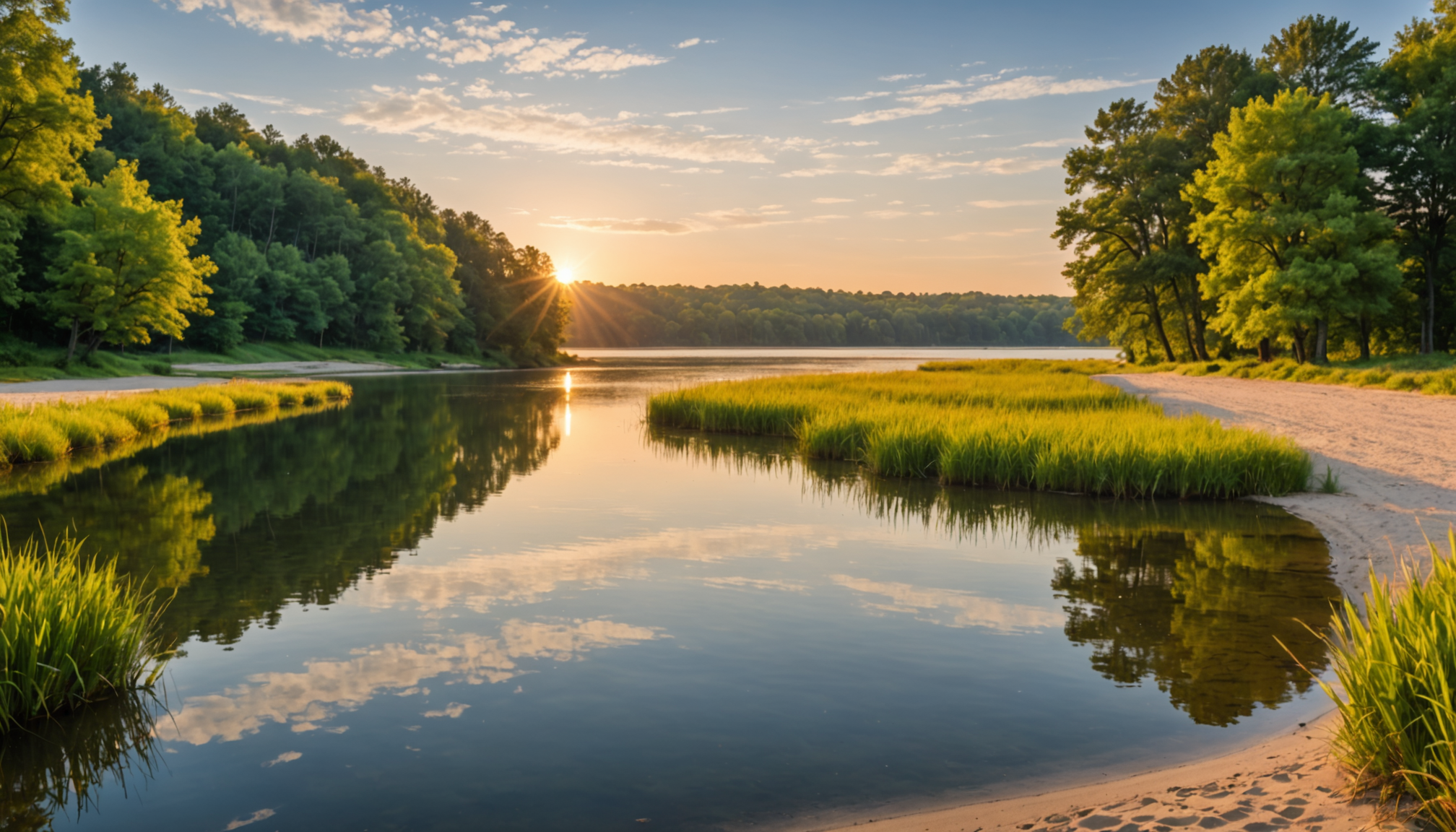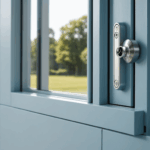Building a backyard dock is an exciting venture, providing a personal gateway to waterborne activities. One of the most critical stages in constructing a dock is selecting and preparing the site. This entails not only choosing a suitable location for the dock but also ensuring that the area is ready for construction. The right site selection involves a blend of practical considerations, environmental awareness, and adherence to legal requirements.
Firstly, assess the landscape and water conditions. Consider the water depth and type – whether it’s a lake, river, or pond. The water depth will influence the type of dock you can build, such as a floating dock for deep or fluctuating water levels. Additionally, examine the water’s current strength and wind exposure. A site with high winds or strong water currents may require a more robust structure or additional anchoring system.
Survey the shoreline to determine the best access point. Look for a naturally level area that minimizes the need for extensive excavation, thus reducing potential environmental impact. It’s also wise to consider proximity to existing structures and ensure that there is ample room for dock extension, maintenance, or potential future enhancements.
Environmental factors are critical in site preparation. Understand the local ecosystem and its implications on the dock design. For example, areas with significant vegetation or wildlife may require careful consideration to avoid ecological disruption. Implementing a design that harmonizes with the surroundings can not only reduce negative impacts but also enhance the dock’s longevity by working with the natural elements rather than against them.
Conduct a soil analysis to identify the substrate on which the dock will be built. Knowing whether the ground is sandy, rocky, or loamy will guide the construction process. Sandy soils may need special foundation considerations compared to rocky substrates, which might provide more stability.
Before breaking ground, it’s essential to clear the selected site from debris and vegetation. This not only makes room for construction but also helps assess the terrain more accurately. Removing obstacles ensures that no unforeseen objects interfere with the dock’s support structures.
Site preparation also involves comprehensive planning for site access during construction. Ensure there is sufficient room for construction equipment and material delivery. Planning for easy access can streamline construction and minimize delays.
To better understand the considerations for site selection and preparation, consider the following table comparing important factors:
| Factor | Considerations |
| Water Type | Lake, river, or pond each have unique requirements. |
| Water Depth | Influences dock design such as floating or fixed. |
| Wind and Current | Determine structural stability needs. |
| Shoreline Access | Look for natural, level access points. |
| Environmental Impact | Minimize disruption to local ecosystems. |
| Soil Composition | Foundation requirements may vary based on soil type. |
Thoughtful site selection and meticulous preparation lay the groundwork for a successful dock project, offering a seamless blend of functionality and respect for the natural landscape. These initial steps are crucial in building a dock that is not only practical but also sustainable, ensuring enjoyment for many years to come.
material choices for your dock
When it comes to building a dock that stands the test of time and suits your specific needs, selecting the right materials is crucial. A well-chosen combination of materials will provide durability, improve aesthetics, and minimize maintenance. Several factors influence the material choices, including environmental conditions, budget constraints, and the desired look and feel of your dock.
1. Wood:
– Pressure-Treated Wood:
– Commonly used due to its affordability and durability.
– Treated to resist rot, decay, and insect infestations.
– Suitable for both framework and decking.
– Requires regular maintenance, including sealing and staining, to prevent weathering and splintering.
– Cedar:
– Naturally resistant to rot and insects.
– Offers a pleasant aroma and unique aesthetic.
– More expensive than pressure-treated wood, but requires less chemical treatment.
– Hardwood (e.g., Ipe, Mahogany):
– Offers extreme durability and resistance to decay and insects.
– Weather-resistant surfaces that remain cooler underfoot in direct sunlight.
– Typically more expensive, but require less frequent replacement.
2. Composites:
– Made from a blend of wood fibers and recycled plastics.
– Highly durable and resistant to fading, staining, and mold.
– Low maintenance, though slightly more expensive than traditional wood options.
– Available in a variety of colors and textures, mimicking the appearance of natural wood without the propensity to warp or splinter.
3. Aluminum:
– Lightweight and resistant to rust and corrosion.
– Ideal for floating docks or areas with fluctuating water levels.
– Minimal maintenance; strength-to-weight ratio makes it easy to install and transport.
– Can be more costly and may not provide the traditional aesthetic some homeowners desire.
4. PVC and Vinyl:
– Offers resistance to UV rays, moisture, and fungi, making it an excellent choice for marine environments.
– Requires little to no maintenance and is available in a range of finishes and colors.
– Comparable in cost to composites, generally more expensive than wood.
– Surface can become slippery when wet, so non-slip options should be considered.
5. Concrete:
– Best suited for fixed docks due to its weight and permanence.
– Provides exceptional durability and virtually no maintenance beyond the initial installation.
– Customizable with various finishes and stains to enhance aesthetics.
– Suitable for high-stress environments but requires professional installation due to its complexity and weight.
Choosing the right material for your dock involves balancing practicality and preference. For a classic and natural appearance, wood remains a long-standing favorite, particularly with conscientious maintenance to sustain its longevity. For those who prioritize minimal upkeep, composites and aluminum present attractive alternatives, offering resilience against the harshest elements and a wide array of stylistic choices.
Consider your specific environmental conditions: salty or freshwater, exposure to sunlight, and temperature fluctuations, which can all affect material performance. By aligning material choice with these factors, you’ll establish a robust structure that complements its surroundings and meets your practical needs.
permitting and regulations
Navigating the world of permits and regulations can be a daunting task, but it is a critical component of building a backyard dock. Complying with all applicable legal requirements not only ensures that your project is above board, but it also helps protect the surrounding environment and community. To start, it’s crucial to research the relevant federal, state, and local regulations that apply to waterfront construction.
Federal Regulations: In the United States, dock construction might fall under the jurisdiction of federal agencies like the U.S. Army Corps of Engineers, which regulates waterways under the Clean Water Act and the Rivers and Harbors Act. Any work that affects navigable waters will typically require a permit from this body. It’s important to consider these permits early in your planning process because they often involve comprehensive applications and extended review periods. The regulations ensure that any construction does not obstruct navigation or harm aquatic ecosystems.
State and Local Guidelines: States often have their own regulations regarding the use of natural resources and waterfront construction. These laws can be more stringent than federal guidelines, depending on the area’s ecological sensitivity and prior environmental protection efforts. For example, some states may require an environmental impact assessment to determine how the dock will affect local wildlife and plant life. Additionally, local municipalities might enforce zoning laws, which dictate land use and structural setbacks. A call or visit to your local zoning office can provide clarity on specific requirements such as dock length limitations, building materials, and allowed proximity to neighboring properties.
Licenses and Notifications: A key benefit of obtaining permits and licenses is the access to expert feedback. Regulatory agencies often require plans to be drawn by professionals, thus ensuring your dock is safe and built to last. Notifications might need to be sent to adjacent property owners, giving them the opportunity to raise any concerns. This step can prevent future disputes and foster goodwill among neighbors.
Environmental Considerations: Compliance isn’t just about paperwork; it’s about responsible stewardship of shared resources. Many regulations are in place to protect wetlands and preserve habitat for fish and other wildlife. By securing the necessary permits, you commit to building in an environmentally mindful manner. This could involve selecting more sustainable materials or employing construction practices designed to minimize ecological disruption.
The process, while potentially time-consuming, enriches your project by ensuring it is legally and environmentally sound. It provides long-term peace of mind, knowing that your dock isn’t subject to fines or mandatory removal for non-compliance. It also enhances the value of your property, as potential buyers will appreciate the fact that the dock is built according to regulation, safeguarding them from any future legal issues.
Therefore, dedicating effort to meet all permitting and regulatory requisites not only guides a smoother construction phase but fundamentally supports responsible development. By adhering to these requirements, you create a space that aligns with community standards and environmental sustainability, making your investment both enjoyable and respected.
construction tips and techniques
As you embark on the physical construction of your backyard dock, there are several essential tips and techniques to keep in mind to ensure a smooth process and a durable final product. To begin with, laying a strong foundation is crucial. Depending on the dock type and the waterbody’s characteristics, you may choose either a pile-driven or a pre-fabricated foundation. In areas with fluctuating water levels, floating docks provide flexibility, while fixed docks offer stability in calm, consistent waters.
Precision and accuracy during the construction phase cannot be overstated. Use a laser level to confirm that all parts of the dock are aligned correctly. This step prevents issues like sagging or uneven surfaces that can arise over time. Additionally, stainless steel or galvanized fasteners are advisable due to their resistance to rust and corrosion, providing longevity and structural strength under harsh environmental conditions.
When attaching the decking material, allow for some space between individual boards, which facilitates water drainage and prevents moisture buildup that can lead to rot. Opt for a diagonal or perpendicular placement pattern relative to the structural beams to enhance strength and support. It’s also beneficial to pre-drill holes to avoid splitting the wood, especially in hardwoods or composite materials.
Plan your construction activities around favorable weather conditions to avoid complications caused by rain or strong winds. Ideal conditions support both the efficiency of the work and the safety of the workers.
Utilizing proper safety gear is non-negotiable. Ensure that everyone on the construction site wears protective equipment such as helmets, gloves, and non-slip footwear. It’s also wise to have life vests available, especially when working over water or on floating docks.
To streamline assembly and ensure full compliance with regulatory specifications, construct the dock in sections off-site and then assemble them in place. This approach not only enhances precision and efficiency but also minimizes environmental disturbance around the building site.
Incorporating additional anchoring systems, such as boulders or deadweights, can bolster the dock’s stability in areas prone to strong currents or high winds. These anchors can be strategically placed to secure the dock firmly to its desired position.
Installing bumpers and fenders increases the dock’s protective measures, particularly for boat owners. These accessories prevent structural damage from boats docking or from debris and buffeting caused by waves.
By integrating these construction tips and techniques, you’ll achieve a sturdy, reliable dock that stands up to both frequent use and natural forces. Each step aids in extending the dock’s usability while ensuring a safe and aesthetically pleasing installation that enhances your waterfront experience. Remember, meticulous planning and execution fuse together with the right materials and construction practices to bring your vision of a backyard dock to life.
maintenance and upkeep
Regular maintenance is essential to ensure your dock remains in excellent condition and safe for use. Begin by conducting a thorough inspection at least once a year, ideally before the start of the boating season. Check for any signs of damage, such as loose boards, rusting fasteners, or weakened structural components. Promptly address these issues to prevent further deterioration.
Cleaning is a straightforward yet crucial part of upkeep. Regularly wash the dock surface using a pressure washer or a garden hose with a stiff brush to remove dirt, algae, and any buildup of debris. Avoid harsh chemicals that could harm the water or surrounding wildlife; instead, opt for eco-friendly cleaning solutions. If your dock is made from wood, reseal or stain it every few years to protect against moisture, UV rays, and mildew. This treatment prolongs the wood’s lifespan and preserves its aesthetic appeal.
Inspect flotation devices, such as barrels or pontoons, if you have a floating dock. Ensure they are in good condition and replace any that are significantly damaged or no longer provide adequate buoyancy. Similarly, check that all anchoring components are secure and adjust them if necessary to maintain stability.
If your dock is equipped with electrical systems for lighting, ensure that all wiring and fixtures meet safety standards and are functioning correctly. Replace any bulbs as needed and inspect for potential water infiltration that could lead to electrical hazards. This check should be part of a broader assessment of the dock’s safety features, such as railings and ladder integrity.
During winter months, special care may be needed, particularly in areas where ice formation can occur. Consider removing parts of the dock or taking other protective measures to minimize ice damage. Some dock types allow for easier removal or can be adjusted to float above rising ice levels.
Preserving the surrounding ecosystem is always a priority. Thus, monitor the dock’s impact on local flora and fauna. Adjust and mitigate any adverse effects as necessary to maintain harmony with the natural environment.
By committing to regular maintenance and proactive care, your backyard dock will remain a functional and inviting feature of your outdoor space, enhancing your waterfront experiences for years to come.
In conclusion, constructing a backyard dock is an intricate project that blends thoughtful planning, material selection, and regulatory compliance. Diligent construction techniques and ongoing maintenance further ensure your dock remains a safe, enjoyable, and sustainable addition to your property. By taking a comprehensive approach, your dock will not only stand as a testament to careful craftsmanship but also as a harmonious element of the natural landscape.


